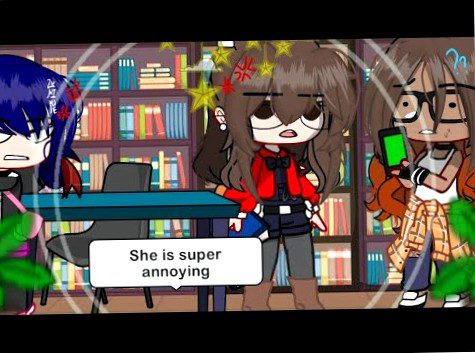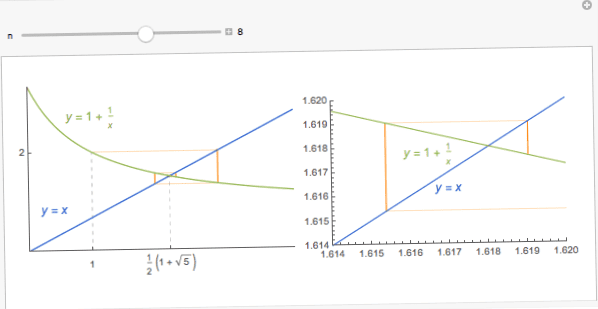Lila is an aspiring mathematician who is interested in recursive sequences. These mathematical objects consist of a specific set of conditions and rules that are used to generate a finite or infinite set of numbers. The fascination with these sequences is that they often have surprising patterns and properties that can be used for different applications.
Purple uses several methods to study recursive sequences, including analyzing their growth rate, finding explicit formulas that describe them, and determining their convergence or divergence properties. In this series of articles, Lila will explain her steps and techniques, illustrating step by step how she studied a particular recursive sequence.
By understanding and analyzing recursive sequences, mathematicians can not only gain deeper insights into the structure and character of numbers and mathematical objects, but also find applications in various disciplines of science and technology, such as.B. In computer science, physics, and financial mathematics.
Introduction
The study of recursive sequences is an important part of mathematics. A recursive sequence is a sequence of numbers in which each element is generated from previous elements by a mathematical function. Understanding this feature is critical to understanding the entire sequence.
In this text, we look at how Lila studies a recursive sequence. To begin, she identifies the initial conditions and the recursive condition. She then applies the recursive condition iteratively to generate more elements of the sequence.
In doing so, it is important to understand the relationship between the elements of the sequence. Lila uses several mathematical techniques and tools to study this relationship and identify patterns in the sequence. With this knowledge, she can further investigate the sequence and make predictions about future elements if necessary.
- Mathematics is an important part of understanding recursive sequences.
- Identifying initial conditions and recursive conditions is key to understanding the sequence.
- Investigating relationships between elements and identifying patterns are important steps in analyzing a recursive sequence.
How Lila studies a recursive sequence
Lila is a mathematician who specializes in the study of recursive sequences. A recursive sequence is a mathematical sequence in which each term is defined based on the previous terms.

Lila’s method for studying recursive sequences consists of several steps. First, she examines the first terms of the sequence to identify a general pattern. Then she looks for a mathematical formula that can describe the pattern. Finally, she tests this formula by applying it to the subsequent terms in the sequence.
When Lila studies a recursive sequence, she does so very systematically. She notes down the terms of the sequence and analyzes them carefully. It also frequently uses mathematical tools such as differential equations and Taylor series to identify and describe the pattern in the sequence.
Through her method, Lila has made many important discoveries in mathematics. Her work has not only helped us better understand how recursive sequences work, but has also contributed to innovations in other areas of mathematics.

Example: Purple and the recursive sequence
Lila is a mathematician who specializes in the study of recursive sequences. A recursive sequence is a sequence of numbers in which each element depends on the previous elements. Purple is particularly interested in sequences where the ratio of adjacent elements is constant.
Lila has recently discovered a new sequence, which she is now investigating. The sequence starts with the first two numbers 1 and 3. Each following element of the sequence is the sum of the two previous elements. For example, the third element is 1 + 3 = 4 and the fourth element is 3 + 4 = 7.
Lila is now interested in determining the ratio of adjacent elements in this sequence. She knows that the ratio between consecutive elements in the Fibonacci sequence is constant and wonders if the same is true for her sequence. To study this, it calculates the ratio of each pair of consecutive elements.
- The ratio between the first and second element is 3.
- The ratio between the second and third elements is 4/1 = 4.
- The ratio between the third and fourth elements is 7/4 = 1.75.
- The ratio between the fourth and fifth elements is 11/7 = 1.5714.
- And so on.
Purple sees that the ratio between adjacent elements in her sequence is not constant, as it is in the Fibonacci sequence. She notes that this sequence is called the Lucas sequence in mathematics and plays an important role in number theory.
Applications of recursive sequences
Recursive sequences, as studied by Lila, have numerous application areas. An important field is computer science, where recursive functions and algorithms are used to solve complex problems. For example, the Fibonacci sequence can serve as the basis for the Fibonacci heap, a data structure for managing graphs.
Recursive sequences are also used in physics to model and calculate complex relationships. Here, self-similar structures such as the Mandelbrot set or the Sierpinski carpet can be generated by recursive algorithms.
- Other applications of recursive sequences include:
- Economics: predicting economic data using time series analysis.
- Neurobiology: modeling of neuronal networks by recursive functions.
- Game theory: analysis of multilevel games by recursive algorithms.
So the applications of recursive sequences are very diverse, ranging from computer science and physics to social science and game theory. By studying such sequences, complex relationships can be better understood and modeled.
Summary:
The study of recursive sequences is an important topic in mathematics. In this context, Lila has developed an interesting method to study recursive sequences. In doing so, it takes advantage of the properties of the sequence members and their dependencies on each other.
Purple first reads the recursive sequence carefully and analyzes the relationship between the links. It then uses its method to find the formula that describes the sequence. Draws on mathematical concepts that are already familiar, such as the arithmetic sum formula.
The study of recursive sequences is an important part of mathematical research. Thanks to Lila’s method, such consequences can be investigated more quickly and efficiently. This opens up new possibilities for the application of recursive sequences in mathematics and other scientific fields.